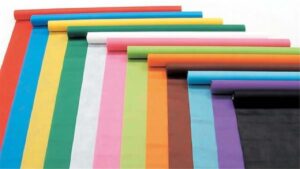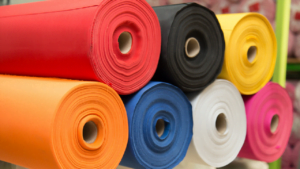The soften blown cycle is interesting among nonwoven frameworks. Essentially it is an innovative adaptation of the creation of cotton candy at carnivals. In making cotton sweets, sugar is dissolved and pressure taken care of through little openings in a rotational turning wheel. After invigorating, the liquid sugar solidifies and is extended into short strands by radial powers. In the softened blown framework, liquid polymers are constrained through little cut openings, and high temperature (230oC-390oC) air is encroached (300-500 miles/hr) at the two sides of the leaving film.
The quick air streams viably stretch or weaken the liquid polymer by various significant degrees and harden it into an irregular exhibit of intermittent sub denier strands. The filaments are then dense (isolated from the air stream) as a haphazardly ensnared web and packed between warmed rolls. This paper manages to produce innovation, sort of polymers utilized, web attributes, properties, and its different applications.
Here are the Different Process of Non Woven Fabric Production:
Process 1st
The polymer pellets or granules are taken care of in the extruder container. Gravity feed supplies pellets to the screw, which turns inside the warmed barrel. The pellets are passed on forward along with hot dividers of the barrel between the trips of the screw. As the polymer moves along the barrel, it dissolves because of the warmth and contact of the gooey stream and the mechanical activity between the screw and barrel. The screw is partitioned into feed, change, and metering zones. The feed zone preheats the polymer pellets in a profound screw channel and passes on them to the progress zone. The screen pack and breaker plate additionally sift through soil and imbued polymer irregularities. The compressed liquid polymer is then passed on to the metering siphon.
Process 2nd
The metering pump is a positive-dislodging and steady volume gadget for uniform liquefy conveyance to the bite the dust gathering. It guarantees steady progression of clean polymer blend under measure varieties in thickness, pressing factor, and temperature. The metering siphon additionally gives polymer metering and the necessary cycle pressure. The metering siphon commonly has two intermeshing and counter-pivoting toothed cogwheels. The positive uprooting is cultivated by filling each stuffed tooth with polymer on the pull side of the siphon and hauling the polymer around to the siphon release.
Process 3rd
The bite the dust gathering is the main component of the dissolve blown cycle. It has three unmistakable segments: polymer-feed conveyance, kick the bucket nosepiece, and air manifolds.
- Feed Distribution.
- Die Nosepiece.
- Air Manifolds.
Process 4th
The cemented filaments in this manner get laid haphazardly onto the gathering screen, shaping a self-fortified nonwoven web. The filaments are by and large laid haphazardly (and furthermore profoundly ensnared) on account of the choppiness noticeable all around the stream, however, there is a little predisposition in the machine bearing because of some directionality conferred by the moving authority. The gatherer speed and the authority distance from the bite the dust nosepiece can be changed to create an assortment of dissolved blown networks. Typically, a vacuum is applied within the gatherer screen to pull out the hot air and upgrade the fiber laying measure.
Process 5th
The soften-blown web is typically twisted onto a cardboard center and handled further as indicated by the end-use necessity. The blend of fiber trap and fiber-to-fiber holding by and large produce sufficient web attachment so the web can be promptly utilized minus any additional holding. In any case, extra holding and completing cycles might additionally be applied to these liquefy-blown networks.
Process 6th
Extra holding, over the fiber grip and fiber entrapment that happens at set down, is utilized to modify web qualities. Warm holding is the most normally utilized method. The holding can be either generally (region holding) or spot (design holding). Holding is typically used to expand web strength and scraped area opposition. As the holding level builds, the web becomes stiffer and less fabriclive.
Process 7th
Most nonwovens are viewed as completed when they are moved up toward the finish of the creation line, many get extra synthetic or actual treatment, for example, calendaring, emblazoning, and fire retardancy. A portion of these medicines can be applied during creation, while others should be applied in isolated completing activities.
Process 8th
The consistency of the web is constrained by two significant boundaries: uniform dissemination of fiber noticeable all around the stream and appropriate change of the vacuum level under the framing wire or belt. Non-uniform dissemination of fiber noticeable all around the stream can result from helplessly biting the dust plane and from non-uniform surrounding wind current into the air stream.
At The End
Wishing that this article would be useful to you and you would surely know about the process that is taking place to do Non woven fabric production.
If you want to know more about it then kindly contact Sommers Nonwoven Solutions.





